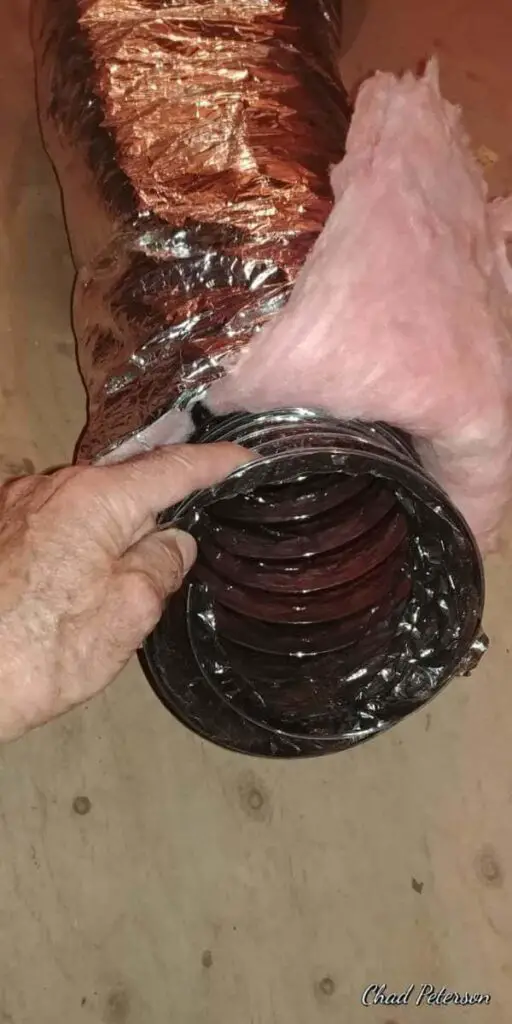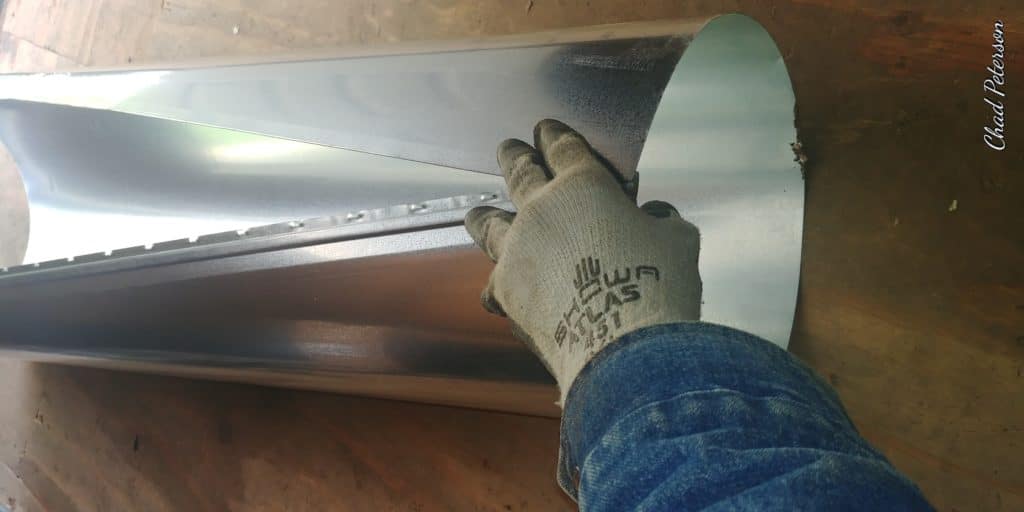Flex duct and rigid duct each have a place when installed correctly. You just don’t install metal duct in a crawl space when flex duct will do a good job. Appearance is crucial to a good job and metal duct should be used when exposed. Example, crawl spaces use flex duct and basements or garages use rigid duct.
There is just a right place for flex duct and the same goes for rigid or sheet metal duct. Together they can make a really good air distribution system.
The best practices and principles behind installing any type of duct work is correct sizing and the straightest line between two points.
Keeping flex duct hung properly and stretched to the right tension has everything to do with giving flex duct a good or bad reputation.
Just like any other product when installed wrong, those who don’t know what a good installation should look like or how to properly install it or size it will give it a bad rap if it doesn’t work.
Flex duct or rigid duct can both fail as a duct system if improperly connected or sized incorrectly.
Because flex duct is spiraled inside it is more restrictive to airflow. Therefore cfm sizing between flexible duct work and rigid pipe is not the same.
What Are The Pros And Cons Of Flex Duct
Flex duct can be easily damaged both during and after installation.

The installer who carelessly drags the duct through or over obstacles and pokes a hole in the outer liner and possibly the inner liner also.
Without noticing or repairing the damage it remains a weak spot or a leak for many years.
It has been discussed here that flex duct belongs normally out of sight. The example, “not in a garage” has been abused by many installation companies.
Over time this exposed duct becomes poked, prodded and torn by movers and projects. It’s just not the place for obvious reasons.
Consider the cable guy or the plumber crawling around in the attic or crawl space inadvertently goes over or under a duct and smashes it or entirely knocks it off it’s connection.
You might want to get your coveralls and headlamp right now and go check.
There is no doubt about it, those smashed ducts are out there.
Because flex duct is so flexible it has to be hung properly and sometimes more consistently than rigid pipe.
Making sure that bends are made wide and open not sharp bends that will unknowingly kink and reduce air flow.
It’s very easy while hanging flexible ducting to choke off the air flow and increase the inefficiency of a high efficiency gas furnace or heat pump system.
Hanging flex with nylon 2″ strapping is is a good method. It can be stapled to rafters and floor joists with ease.
But avoid hanging the duct like a saddle. Run a length of strap completely around the duct and fit it properly.
Treat flex duct gently and it will return you many favors over the years.
Use a little more strap and hang it more often than you may feel is necessary. Strap is cheap and pinched duct work is expensive over time.
The upside to flex duct is it’s ease of installation. The ability to conform to areas of a structure that would take many more hours to complete if it were done in rigid pipe.
Compared to rigid or metal duct, flex can be run for a long ways without a joint. Boxes of flex normally come in 25 foot lengths.
The fewer joints in a duct system the less duct sealing has to be done.
Because of the inner liner of flex duct being in a spiral form, kind of like an accordion, it actually is quieter than duct systems make of rigid metal.
Also because of this spiraling interior of a length of flex duct it has slightly more resistance to airflow and sizing is different than rigid piping.
It would require sizing up to the next size or more in some cases compared to rigid pipe to compensate for that resistance.
A very added plus to using flex duct is the fact that it comes insulated. An inner liner wrapped with 2 inches of insulation and that insulation covered with another vapor barrier.
When a crawl space is the location of flex duct, sometimes the distance between the bottom of the floor joists and the dirt in the crawl is at a minimum.
Moisture and mold can attach the outer liner and it will disintegrate.
Keep it off the dirt.
Flexible ducting is available with one inch of insulation or with no insulation at all.
Most codes for residential applications require 2 inches. You should check with your local building department.
It’s very important when choosing to use flex duct that you have a really good filter system. Duct cleaning can damage flex duct when done improperly.
And how would most people know how a proper duct cleaning would be done?
It’s not about flex duct having, according to some, a bad reputation. Flex duct is a superior product when installed correctly and protected against damage.
The Pros And Cons of Installing Rigid Ductwork
Installing rigid duct requires a completely different set of tools.
Rigid pipe generally comes in five foot lengths. You can get other lengths.

Each section has to be snapped together along a seam that runs it’s length.
Each length has to be inserted into it’s adjoining length or fitting and the two sections have to be screwed together and sealed because each joint is an air leak if left unsealed.
Remember that two screws is a hinge and three screws forms a joint. Larger pipe sizes may need more screws.
Metal fittings such as boots, wye branches and elbows have gores and joints that either swivel or just connect pieces. Each of these gores or joints is an air leak and has to be sealed.
If you were to add up all the gores and joints in an entire duct system made of rigid pipe and estimated each of those joints to be a hair line crack, the equivalent of all those cracks would be a very large hole in your system.
To add a little pain to the cost and time involved with installing metal duct work, the entire system has to be wrapped with insulation.
Wrapping metal duct in the areas provided to installers is near impossible. Leaving some with less than good intent to do a poor job.
Even when building a system with flex duct some metal is generally used for plenums. Those ducts immediately at the air handler or furnace.
These plenums have to be insulated. Most companies insulate their plenum on the inside and secure the insulation with glue and spot welded pins.
This insulation over time accumulates some awful looking stuff. If you have a choice, insulate on the outside. It can be made to look good and make keeping duct work clean a simpler chore.
This inside insulation has been known to come loose and plug ducts.
As mentioned about flex duct being quiet, metal duct has a distinct sound that is easily carried throughout the entire system if proper precautions are not taken.
As you can probably visualize while reading this post, rigid pipe would be very labor intensive.
The science behind a heating and cooling system moving air through your home originates from the individual room that is being conditioned.
Heat and cooling load calculations are done room by room. You should determine using flex or rigid ducting to your rooms by how you are going to get access for ducting to the room and the type of construction.
Should Mobile Home Cross Over Pipes Be Made Of Metal or Flex?
The mobile home industry has some serious weaknesses.
For double and triple wide homes the duct work is really quite well insulated between the floor and the belly liner under the homes.
The weakness comes when you connect the sections with flex duct.
Even when skirted nicely with blocks the underside is very often inundated with rodents and cats.
All it take is one air vent to be punctured and it opens the underside to a world of trouble.
The flex duct is such an inviting attraction because of the warmth radiated in the winter.
No type of flex duct can withstand the desire of these animals to find comfort and enter the system.
The critters obtain access to the entire duct system. It becomes to say the least, a disaster.
Using rigid pipe, sealing and insulating the job is an excellent application for such a circumstance.
Most every product has it’s proper application. Using these products, flex duct or metal to make a job lasting and efficient should be the goal of every installer no matter if you are doing your own work or not.
